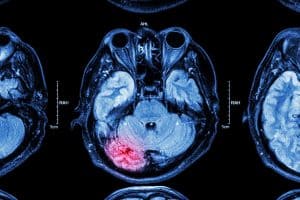Why Is TBI Called “The Invisible Injury”?

Brain injuries aren’t like a cut or a broken arm where the injury is visible and can be viewed on an x-ray or MRI. TBIs are more subtle and when people experience head injuries, they may seem fine at first, but then begin struggling with symptoms like memory loss, headaches, depression, or aggressive behavior.
Since early signs of TBI can go unnoticed, patients often don’t receive proper or timely diagnosis and treatment. Brain damage resulting from a head injury can go undetected, even when using CT scans and MRIs. This is because symptoms of brain injuries may not appear for days, weeks, or even months following an accident and initial treatment.
According to the Centers for Disease Control (CDC), nearly 50,000 people die from TBI-related injuries every year. TBI also contributes to about 282,000 hospitalizations and 2.5 million emergency room visits every year. Brain injuries may be invisible, but they are unfortunately common.
Myths about traumatic brain injury
Brain injury tends to be a misunderstood condition, even by some in the medical, legal, and insurance profession. It’s important to understand that you can have a permanent and disabling TBI despite things like the following:
- You weren’t unconscious when the accident occurred. You don’t have to have been “knocked out” to suffer a concussion and TBI.
- You seemed “fine” at the scene of the accident, walking and talking. Many people don’t immediately show symptoms after a brain injury.
- You didn’t sustain any other injuries like broken bones or cuts and bruises, or it wasn’t a “big” car accident. Even low-speed car crashes can cause brain injuries.
- You have a negative CT scan or MRI. These tests aren’t sensitive enough to detect and diagnose microscopic brain injuries.
- You have a normal neurological exam. Again, these tests may not be sensitive enough to detect neurological changes or deficits that occur with traumatic brain injury.
If you or a loved one has suffered a traumatic brain injury in a preventable accident, you need experienced and knowledgeable representation from the personal injury lawyers at Taylor & Ring.
Our Los Angeles attorneys understand the intricacies of brain injury and work to get you the maximum compensation you deserve for your injuries. Talk to our lawyers today at 310.776.6390 or complete our contact form to schedule a consultation.

Serving clients throughout the Greater Los Angeles and Southern California area, we represent victims in a variety of civil litigation cases. If you or a loved one has been injured, turn to an experienced Los Angeles personal injury or sexual assault lawyer.
Find out more about Taylor & Ring.

